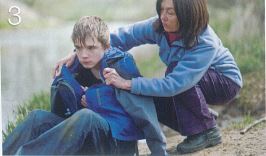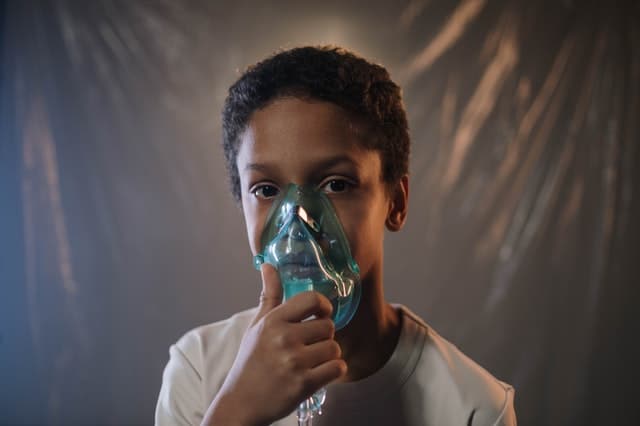FIRST AID – WATER INCIDENTS
Drowning Incidents around water may involve people of any age. However, drowning is one of the most common causes of accidental death among young people under the age of 16.
Young children can drown in fish ponds, paddling pools, baths, and even in the toilet if they fall in head first as well as in swimming pools, in the sea, and in open water.
Many cases of drowning involve people who have been swimming in strong currents or very cold water, or who have been swimming or boating after drinking alcohol.
There are particular dangers connected with incidents involving swimmers in cold water. Open water around Great Britain and Ireland is cold, even in summer. Sea temperatures range from 5°C (41°F) to 15°C (59°F); inland waters may be colder.
The sudden immersion in cold water can result in overstimulation of nerves, causing the heart to stop (cardiac arrest). Coldwater may cause hypothermia and exacerbate shock.
Spasm in the throat and inhalation of water can block the airway. Inhaled or swallowed water may be absorbed into the circulatory system, causing water overload to the brain, heart, or lungs. The exertion of swimming can also strain the heart.
 CAUTION
CAUTION
- If the casualty is unconscious, lift him clear Of the water, support his head and neck, and carry him With his head lower than his chest. This stops him from inhaling water and protects the airway if he vomits.
- When you reach land, open the airway and check to breathe.
WATER RESCUE
- Your first priority is to get the casualty on to dry land with the minimum of danger to yourself. Stay on dry land, hold out a stick, a branch, or a rope for him to grab, then pull him from the water. Alternatively, throw him afloat.
- If you are a trained life-saver, there is no danger to yourself and the casualty is unconscious, wade, or swim to the casualty and tow him ashore. If you cannot do this safely, call 999/112 for emergency help.
- Once the casualty is out of the water, shield him from the wind, if possible. Treat him for drowning and the effects Of severe cold. If possible, replace any wet clothing with dry clothing.
- Arrange to take or send the casualty to the hospital. even if he seems to have recovered completely. If you are at all concerned, call 999/112 for emergency help.


Drowning MAJOR INCIDENTS
A major incident is one that presents a serious threat to the safety of a community or may cause so many casualties that it requires special arrangements from the emergency services.
Events of this kind can overwhelm the resources of the emergency services in the area because there may be more casualties to treat than there is personnel available. It is the responsibility of the emergency services to declare a situation to be a major incident, and certain procedures will be activated by them if necessary.
The area around the incident will be sealed off and hospitals and specialist medical teams will be notified. It is not a first aider’s responsibility to organize this, but you may be asked to help.
If you are the first person on the scene of what may be a major incident, do not approach it. Call 999/112 for emergency help immediately.
The ambulance control will need to know the type of incident that has occurred (For example, a fire, a traffic incident, or an explosion), the location, the access, any particular hazards, and the approximate number of casualties that may be involved.
EMERGENCY SERVICE SCENE ORGANISATION
First, the area immediately around the incident will be cordoned off – the inner cordon. Around this, an outer cordon, the minimum safe area for emergency personnel (fire, ambulance, and police), will be established.
No one without the correct identification and safety equipment will be allowed inside the area. A casualty clearing station, where treatment takes place, a survivor reception center, where the uninjured assemble, and ambulance parking and loading areas will be established inside the cordons
- Casualties who cannot walk will undergo further assessment. Depending on the findings, casualties will be assigned to Red Priority One (immediate) or Yellow Priority Two (urgent) areas for treatment and will be transferred to the hospital by ambulance as soon as possible.
- Walking casualties with minor injuries will be assigned to the Green Priority Three area for treatment and will be transferred to the hospital if necessary.
- Uninjured people will be taken to the survivor reception center.
TRIAGE
The emergency services initially use a system called a triage sieve to assess casualties. All casualties undergo a primary survey at the scene to establish treatment priorities. This will be followed by a secondary survey in the casualty clearing station. This check will be repeated and any change monitored until a casualty recovers or is transferred into the care of a medical team.
Drowning incident – FIRST AIDER’S ROLE
You will not be allowed to enter the cordoned area without adequate personal safety equipment. You may be asked to assist the emergency services at an incident by, for example, helping to identify those casualties with minor injuries, supporting injured limbs, or making a note of casualties’ names, and/or helping to contact their relatives.

